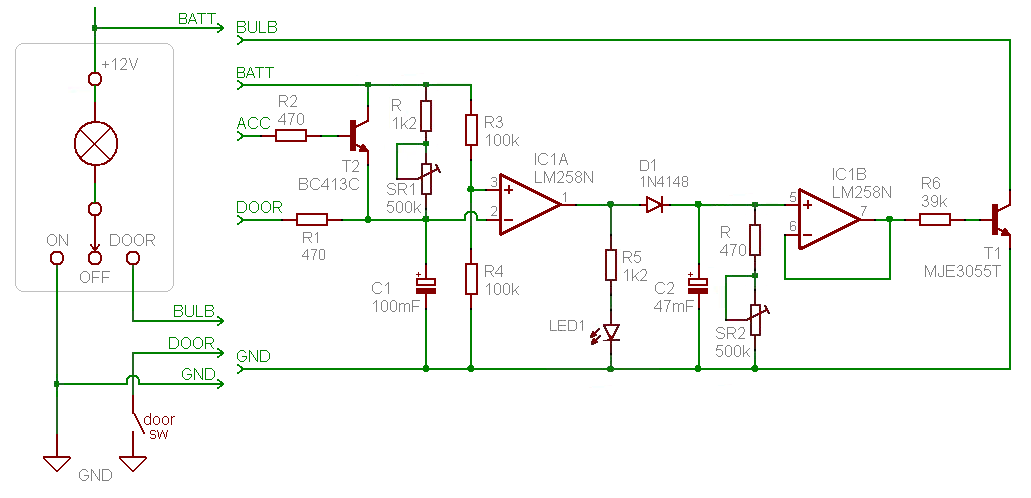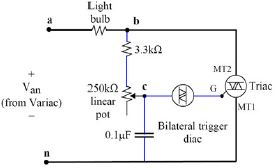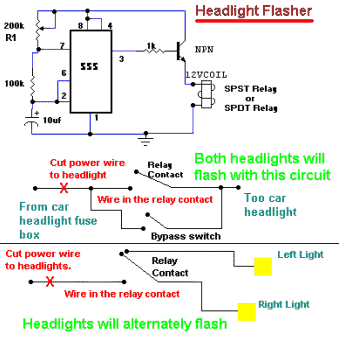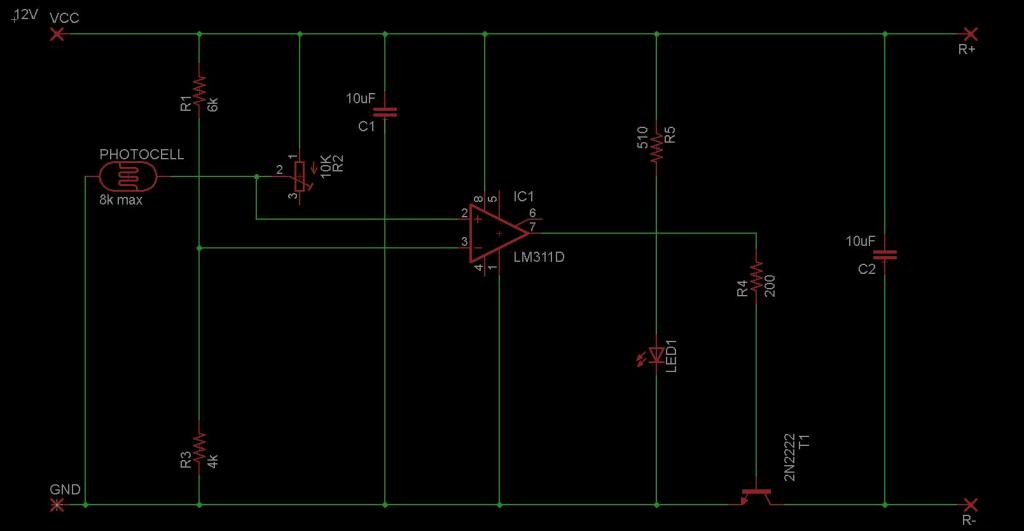
dome light dimmer (with delay)

Introduction and disclaimer for individuals interested in a fading dome light (also referred to as courtesy light or theatre lighting) without incurring high costs.
A fading dome light circuit is designed to create a gradual illumination effect, enhancing the aesthetic appeal and functionality of interior lighting in vehicles or residential spaces. This type of circuit typically utilizes a combination of resistors, capacitors, and a transistor or integrated circuit to achieve the desired fading effect.
The core component of the circuit is usually a capacitor, which charges and discharges over time, allowing for a smooth transition in brightness. When the circuit is activated, the capacitor begins to charge through a resistor, gradually increasing the voltage across the load (the light source). As the voltage rises, the light intensity increases until it reaches a predetermined level. Subsequently, the capacitor discharges, causing the light to dim gradually back to zero.
To implement this circuit, a few key components are necessary:
1. **Power Source**: A DC power supply, typically from the vehicle's battery or a wall adapter for home use.
2. **Transistor or MOSFET**: Acts as a switch to control the current flow to the light source, allowing for the fading effect.
3. **Capacitor**: Determines the timing of the fade effect; larger capacitance results in a slower fade.
4. **Resistor**: Works in conjunction with the capacitor to control the charging and discharging rate, thereby influencing the fade duration.
5. **Light Source**: This can be an LED or incandescent bulb, depending on the desired brightness and power consumption.
The circuit may also include additional features such as a potentiometer for adjusting the fade time or a microcontroller for more complex fading patterns. Properly designed, this circuit not only enhances the ambiance of a space but also provides a smoother transition that is easier on the eyes compared to abrupt lighting changes.
To ensure safety and reliability, it is essential to select components that can handle the expected current and voltage levels, and to implement protective measures such as fuses or circuit breakers where necessary. Proper PCB layout and soldering techniques should also be followed to avoid potential issues with signal integrity and component failure.Intro & disclaimer For all you guys out there that want a fading dome light (aka courtesy light aka theatre lighting) without having to pay for.. 🔗 External reference
A fading dome light circuit is designed to create a gradual illumination effect, enhancing the aesthetic appeal and functionality of interior lighting in vehicles or residential spaces. This type of circuit typically utilizes a combination of resistors, capacitors, and a transistor or integrated circuit to achieve the desired fading effect.
The core component of the circuit is usually a capacitor, which charges and discharges over time, allowing for a smooth transition in brightness. When the circuit is activated, the capacitor begins to charge through a resistor, gradually increasing the voltage across the load (the light source). As the voltage rises, the light intensity increases until it reaches a predetermined level. Subsequently, the capacitor discharges, causing the light to dim gradually back to zero.
To implement this circuit, a few key components are necessary:
1. **Power Source**: A DC power supply, typically from the vehicle's battery or a wall adapter for home use.
2. **Transistor or MOSFET**: Acts as a switch to control the current flow to the light source, allowing for the fading effect.
3. **Capacitor**: Determines the timing of the fade effect; larger capacitance results in a slower fade.
4. **Resistor**: Works in conjunction with the capacitor to control the charging and discharging rate, thereby influencing the fade duration.
5. **Light Source**: This can be an LED or incandescent bulb, depending on the desired brightness and power consumption.
The circuit may also include additional features such as a potentiometer for adjusting the fade time or a microcontroller for more complex fading patterns. Properly designed, this circuit not only enhances the ambiance of a space but also provides a smoother transition that is easier on the eyes compared to abrupt lighting changes.
To ensure safety and reliability, it is essential to select components that can handle the expected current and voltage levels, and to implement protective measures such as fuses or circuit breakers where necessary. Proper PCB layout and soldering techniques should also be followed to avoid potential issues with signal integrity and component failure.Intro & disclaimer For all you guys out there that want a fading dome light (aka courtesy light aka theatre lighting) without having to pay for.. 🔗 External reference





